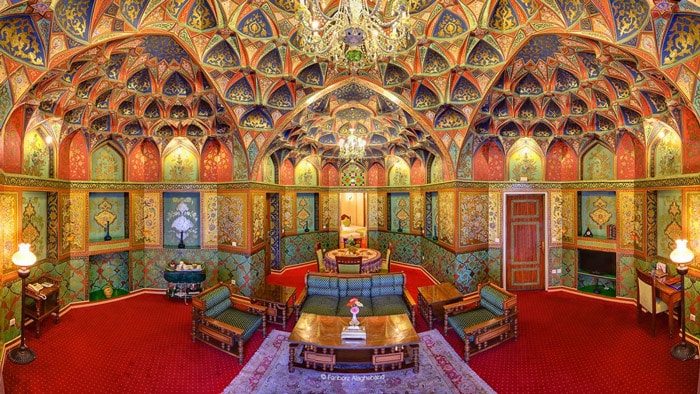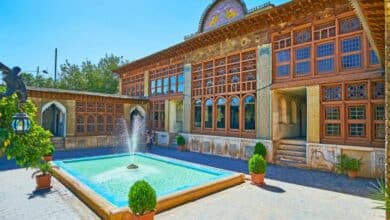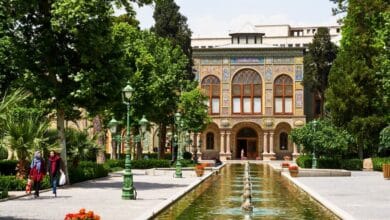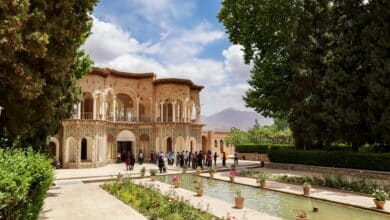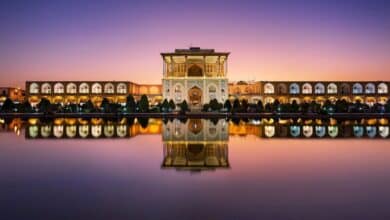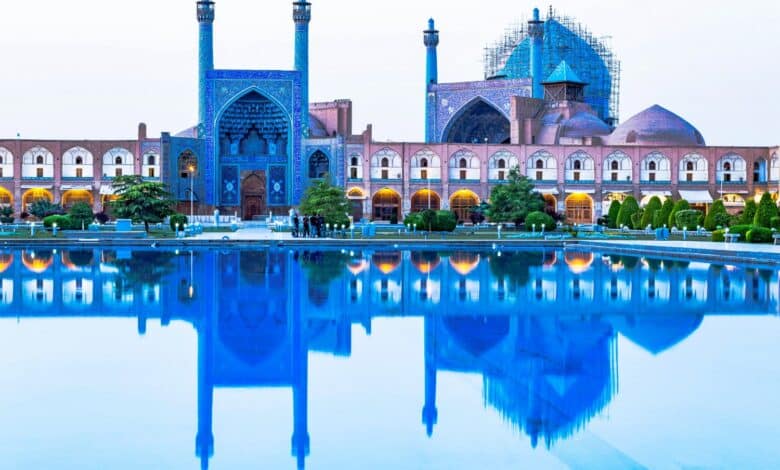
Isfahan is one of Iran’s most beautifully designed cities. It is well known for its many historic places, especially from the Safavid time period hundreds of years ago. Many people refer to Isfahan as “Nesf-e Jahan,” meaning “Half the World,” because it offers much to see and do.
The city combines old Iranian culture with medieval artwork. Blue domes and detailed designs make Isfahan one-of-a-kind. Visitors from across the globe appreciate Isfahan’s special charm. No matter when you travel there, you will think everything looks amazing. You can explore historic areas without ever getting tired.
This article will tell you about the top 10 most spectacular places to see in Isfahan.
Contents
1. Naqsh-e Jahan Square
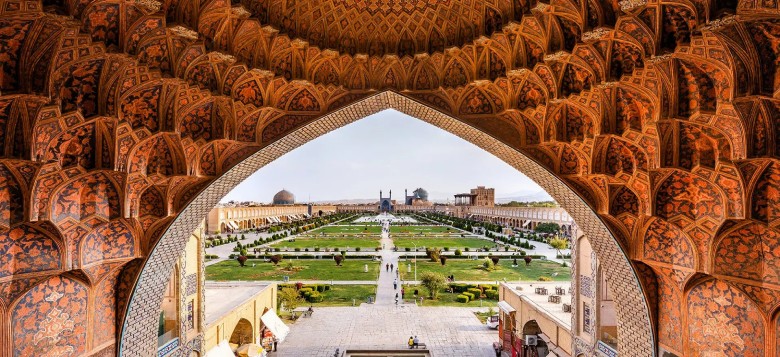
Most roads in Isfahan lead to Naqsh-e Jahan Square, which is considered one of the largest and finest squares globally. Its name means “Pattern of the World.” Inside the square, you can shop and photograph while horse carriages offer rides or sip coffee. Nearby hotels provide easy access to explore.
Naqsh-e Jahan Square impressively features buildings like the Ali Qapu Palace, Sheikh Lotfollah Mosque, and the Emam Mosque. It looks stunning during the day and at night. Fine crafts and beautiful blue tiles decorate everything. The square has a long history, beginning in the Timurid era. It became even greater under Shah Abbas I.
In the middle sits a large fountain, while surrounding shops sell Iranian gifts and souvenirs. Historical events such as celebrations and parades once occurred here. Regardless of season, Naqsh-e Jahan Square is one of Isfahan’s top attractions.
2. Ali Qapu Palace
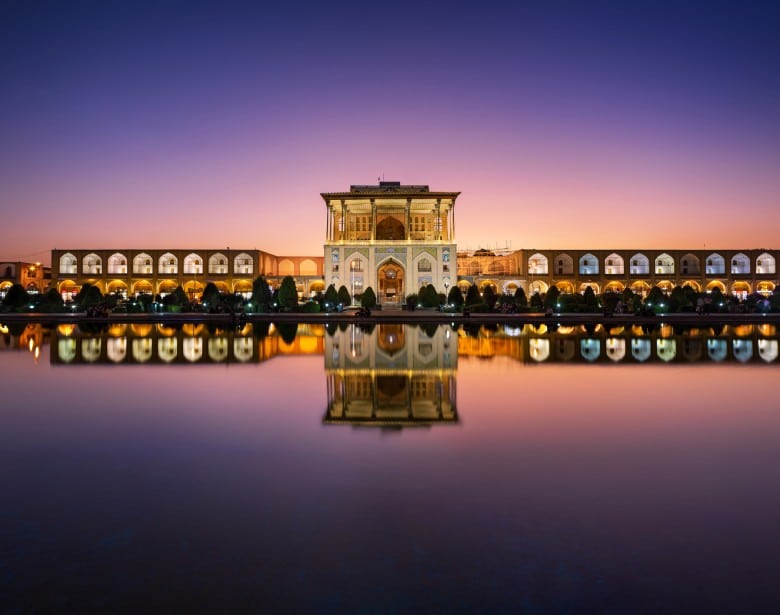
The Ali Qapu Palace is well worth seeing in Isfahan. It is located at Naqsh-e Jahan Square, an architectural masterpiece from the Safavid era.
This six-story building stands proudly at 36 meters high. Its intricate designs and patterns have survived through time and remain intact despite being old. One beautiful feature is the large veranda with stunning views of the square below.
The palace was constructed in five phases over many years. Parts were added as the population grew, including the upper floors and the music hall room at the very top. A veranda overlooking the square and more columns were later additions.
The detailed stucco work and miniature designs inside are genuinely unique. Seeing it gives a real sense of Iran’s rich history. Set aside time to explore this impressive monument daily from 9am to 6pm. The Ali Qapu Palace is undoubtedly one of Isfahan’s top sites and worth experiencing.
3. Masjed-e Emam (Emam Mosque)
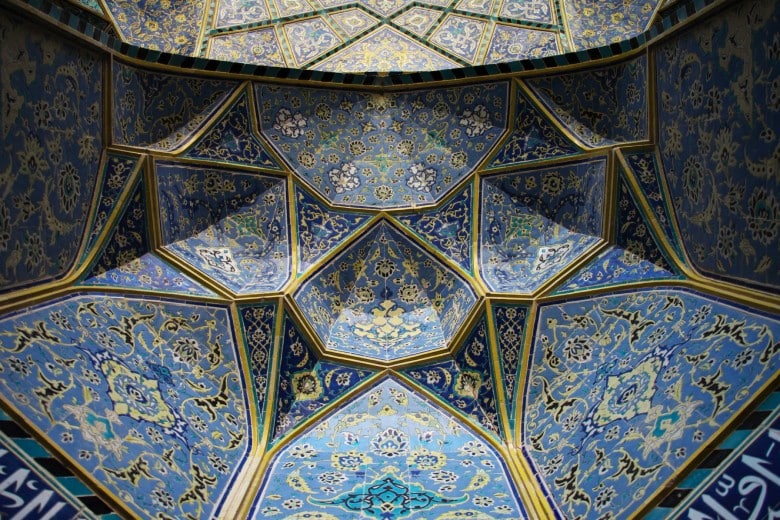
Isfahan has beautiful historic mosques that are places of worship and treasures. Many were built after Islam came to Iran, but most date to the Safavid era.
The stunning Emam Mosque is one of Isfahan’s top sights. Located at Naqsh-e Jahan Square, it influenced mosque design across Iran. Iranian and foreign visitors come daily to admire its architecture, artwork, and centuries of history.
Another famous mosque is the Sheikh Lotfollah. Its turquoise dome and intricate decorations make it popular with photographers. Its unique design features no minarets or courtyard. Natural light lets you see details best during the day.
The Jameh Mosque is one of Iran’s oldest mosques in the city center. Visitors appreciate its valuable inscriptions and stucco art from previous eras. Its importance earned recognition from UNESCO, too.
Exploring Isfahan’s historic mosques provides lessons in art, design, craftsmanship, and the city’s past. They remain active places of worship while maintaining their significance as national treasures.
4. Khaju Bridge
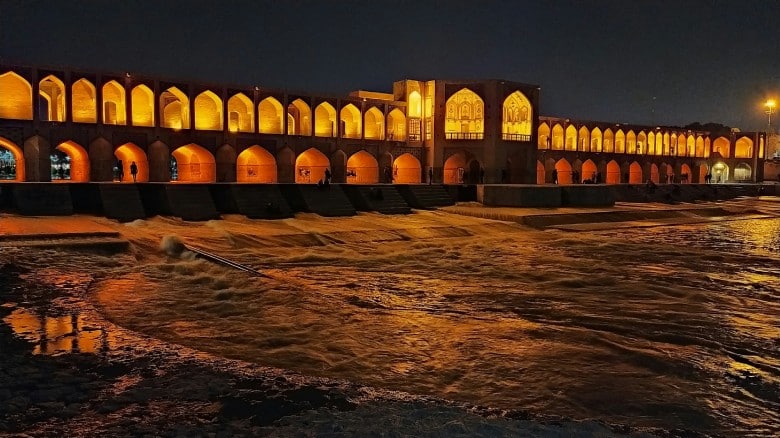
The most beautiful bridge in Isfahan is the stunning Khaju Bridge, crossing the Zayandeh River. Locals love strolling here, and it creates lasting memories for visitors.
Shah Abbas II had the bridge constructed east of the nearby Thirty-Three Bridge. It holds great historical significance. Decorative tiles and architectural features adorn its entire span, enhancing its loveliness.
Legends surround the bridge, like mysterious symbols and graves found near it. Its beauty earned recognition as a national heritage site.
In the center sits a simple but pretty royal resting place called the Beglerbegi, where Shahs enjoyed scenic views. At sunset, reflections in the water make this one of Isfahan’s top places to see.
The graceful arch design exemplifies great Iranian architecture. Together with the Beglerbegi building, it attracts many tourists who are interested in culture and history. Spending time on the iconic Khaju Bridge is necessary for any trip to Isfahan.
5. Si-o-Se Pol (Thirty-Three Bridge)
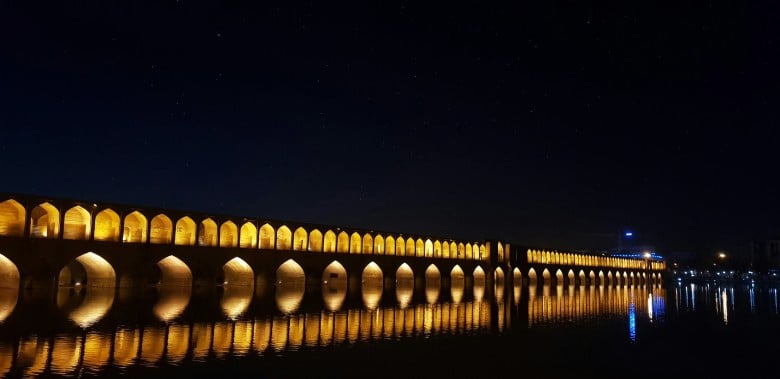
The famous Si-o-Se Pol Bridge, called the Thirty-Three Bridge, is a historical symbol of Isfahan City. Built during the Safavid era over 400 years ago, it offers beautiful sights like sunset views.
Spanning the life-giving Zayandeh Rud River, this bridge played an important role in celebrations and events in the past. Both locals and tourists still enjoy strolling across it today.
For visitors to Isfahan, Si-o-Se Pol represents the city. Its arched design and length of over 300 meters, carrying its 33 namesake arches, showed ingenious architecture when constructed.
Local leader Allah-Vardi Khan had it built during Shah Abbas’ rule. Ever since, the bridge has calmed people with its relaxing atmosphere, which is wonderful at dusk.
Listed as a protected heritage site, exploring Si-o-Se Pol offers lessons in history. Young or old will appreciate walking over this iconic landmark spanning Isfahan’s key river.
6. Chehel Sotoun Palace
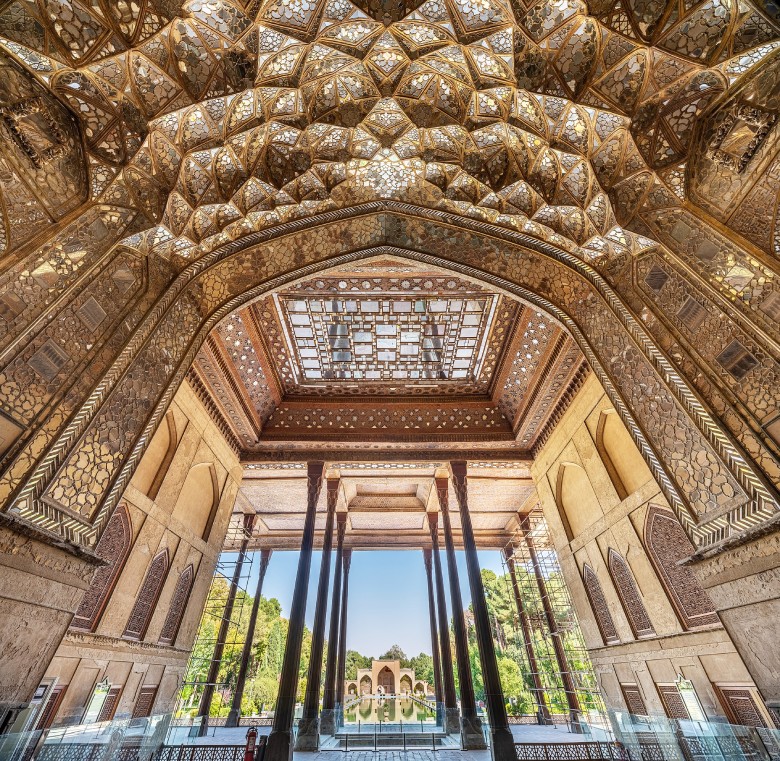
Have you seen the gorgeous paintings and mirror work at the Chehel Sotoun Palace? This stunning building in Isfahan reflects its visitors and is worth seeing.
Constructed during the Safavid dynasty, the architectural style here differs from others in the city. Its overlapping buildings, lush gardens, and beautiful decor make it enchanting.
Known also as the Forty Columns Palace, it was completed in stages. Later additions included more floors, a music hall, and a veranda. Together with its gardens, it earned national heritage status.
A museum on site holds historical artifacts like pottery, tiles, manuscripts, and carpets from ancient Isfahan. Coins, inscriptions, and textiles date back centuries.
The intricate craftsmanship inside and scenic surroundings offer insight into Iran’s rich past. Make time daily to experience this exquisite palace for yourself. Its unique beauty deserves exploring in person.
7. Menar Jonban

Next is Menar Jonban, one of Isfahan’s most famous historical attractions, which has a mysterious feature – its shaking minarets.
Inside is the tomb of a 7th-century mystic named Amu Abdullah Karladani. This mausoleum is unique because climbing its 17-meter-tall minarets causes them to vibrate without collapse.
It is built of brick and has an old veranda style, with two minarets added later. For a long time, the cause of their shaking went unknown. Science now explains it as a resonance between the towers.
Listed as an important heritage site, the moving minarets continually draw visitors. Seeing this odd phenomenon for yourself is fascinating. Menar Jonban offers clues to the architectural advances of Iran’s past dynasties.
Whether local or foreign, exploring its unique qualities helps us appreciate Isfahan’s rich history treasures.
8. Hasht Behesht Palace
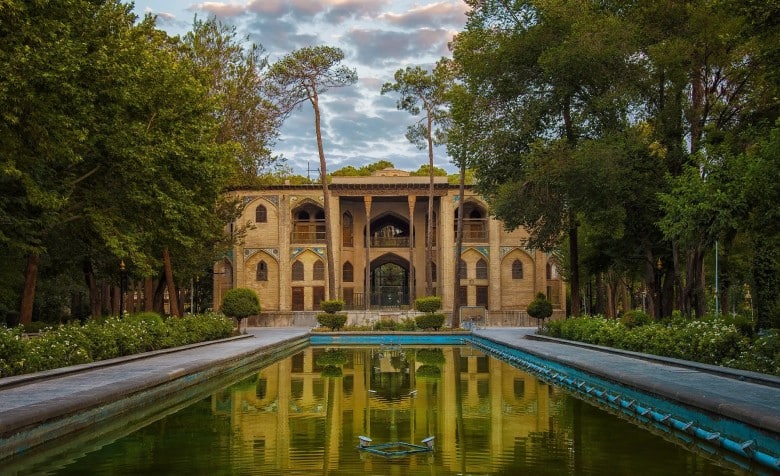
The beautifully designed Hasht Behesht Palace was once called the most beautiful in the world during the Safavid era. In Isfahan’s historic Chahar Bagh area, it is the only remaining pavilion from that period.
Situated within a scenic park, this palace earned national heritage status. Its unique architectural style differs from other structures in the city.
Overlapping buildings, exquisite decorations, and lush gardens led travelers long ago to say it was more delightful than European palaces of the time.
Its intricate design, among lovely gardens, offers a glimpse of Safavid art at its finest. All can appreciate what made this palace so acclaimed during that dynasty.
Be sure to set aside time to explore Hasht Behesht Palace yourself daily, admiring its splendor, which remains one of Isfahan’s must-see cultural treasures.
9. Atiq Square
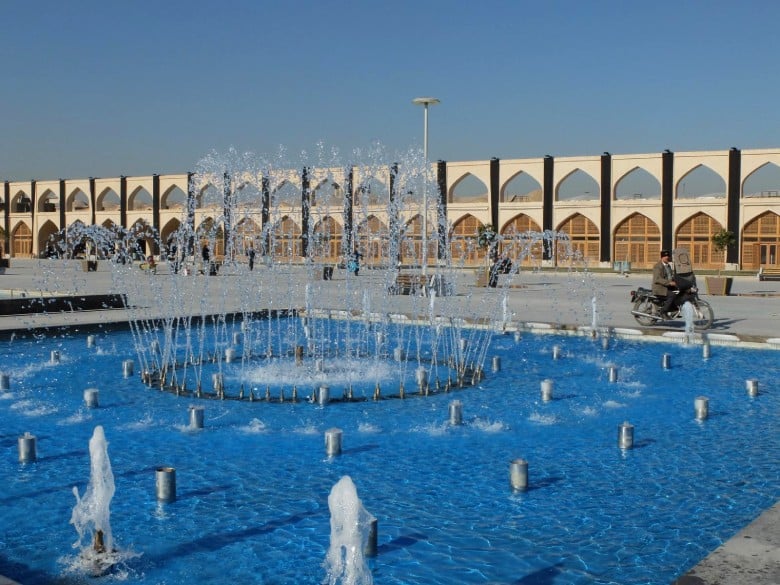
Near Naqsh-e Jahan Square is the older Atiq Square, also called Kohneh Square (Old Square) or Emam Ali Square.
Built during the Seljuk dynasty, it was once a busy center in Isfahan. Construction of the larger, newer square caused this one to decline over time.
Efforts are underway to restore its past vibrancy. The square has a similar architectural style and diamond-shaped layout to its famous neighbors.
Nearby sites include the Mausoleum of Harun al-Rashid and old neighborhoods. Exploring Atiq Square offers glimpses into Isfahan’s earlier period before later developments.
Its rich history and ongoing revival make it worth a visit for those interested in different phases of the city’s long story.
10. Vank Cathedral and Museum
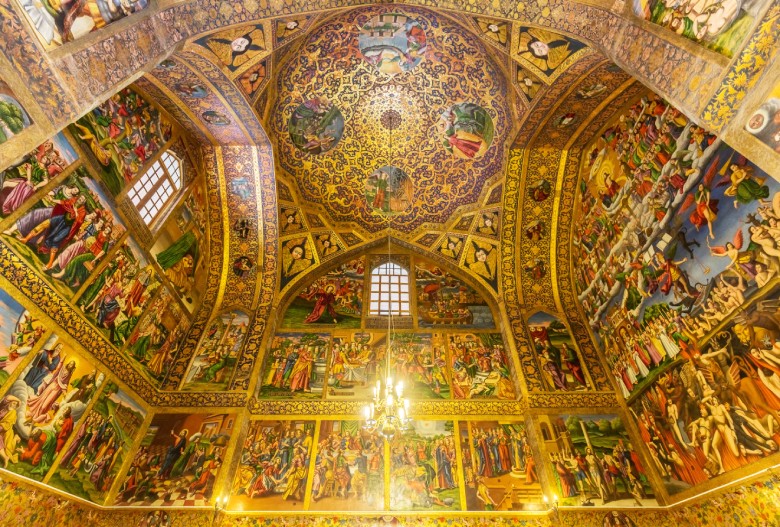
The beautiful Vank Cathedral blends Iranian and Armenian architecture, making it one of Isfahan’s most stunning churches.
Located in the old Armenian district of Jolfa, its interior wall paintings tell rich religious and historical stories. The bishop resides here and serves the city’s Armenian community.
Beyond its services, it contains a museum, library, monastery, and more. Visitors appreciate artifacts such as manuscripts, Iran’s first printing press, and Biblical depictions.
Built by Armenians inspired by their other cathedral, Vank’s domed structure reflects a fusion of styles. Every inch sparkles with artistic decor like paint, stucco, and gilding.
Holding significance for Isfahan’s Armenian population, taking time to experience its exquisite artwork highlights ties between cultures in Iran’s past.
Book Iran Flights
Buy Iran flight tickets at the lowest price
Explore Iran’s culture and history with affordable and reliable flight tickets.
Final Words
We’ve shared overviews of some top Isfahan sights to help plan your visit. Whether you’re curious about religious places, historical buildings, parks, or culture – Isfahan offers it all.
This vibrant city rewards exploration. As a destination, it caters to diverse travelers seeking different experiences. Come alone or with family/friends, Isfahan welcomes every type.
Its treasures cross many topics and appeal to all interests. From stunning mosques and palaces to lively bazaars, enough remains to fill any trip.
Now that you have a taste, start planning your journey to this region today. Your adventures in beautiful Isfahan surely won’t disappoint.
Top 10 Places to Visit in Isfahan Frequently Asked Questions
What are the best places to visit in Isfahan at night?
With their unique ambiance, the Khaju Bridge, Si-o-Se Pol, and Dehdashti House are the best choices for nighttime exploration.
What are the best places in Isfahan for photography?
All of Isfahan’s attractions are photographic gems. Among them, Naqsh-e Jahan Square and all the historical buildings around it, as well as Chaharbagh Abbasi Street, offer breathtaking scenery for photography.
Which attractions are located in Naqsh-e Jahan Square?
Ali Qapu Palace, Sheikh Lotfollah Mosque, Emam Mosque, and Qeysarie Bazaar.
